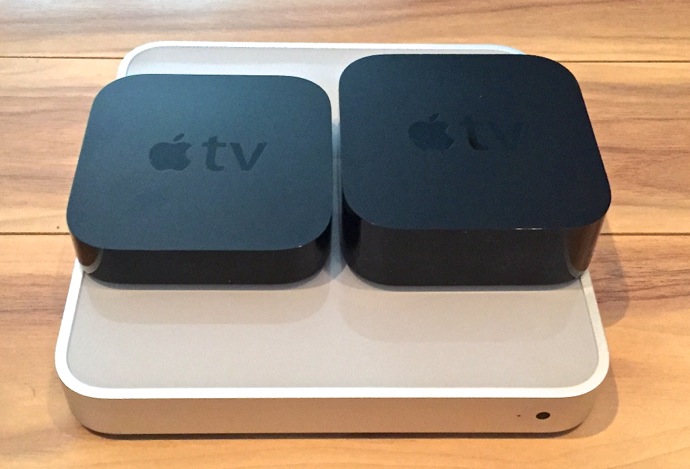
No Dramatic Outward Physical Change
The new 4th generation Apple TV may look an awful lot like the previous generation model, but Apple’s latest set-top box brings dramatic changes. Physically, the two devices are clearly part of the same family. They have the same black plastic enclosure, the same logo on top and the same foot print. The Apple TV 4 is taller, though. If you look at the photo above, that’s an Apple TV 3 and an Apple TV 4 sitting on top of a first generation Apple TV.
Yes, the original was about the same size and appearance as a Mac Mini…
Significant Upgrades Inside
The 3rd generation Apple TV hardware has been on the market for three years now. Inside is an A5 CPU (the same 2011-era processor used in the iPhone 4S), 512MB of RAM and 8GB of Flash storage. Wi-Fi is 802.11n.
The 4th generation Apple TV is equipped with the A8 CPU from the iPhone 6, 2GB of RAM and has either 32GB or 64GB of Flash storage. Its Wi-Fi capability has been upgraded as well, to 802.11ac with MIMO.
Both generations of the Apple TV incorporate Bluetooth, Infrared and HDMI.

The 4th generation replaced the former microUSB port (used exclusively for service) with USB-C and ditched the Optical audio output found in the Apple TV 3.
New Siri Remote
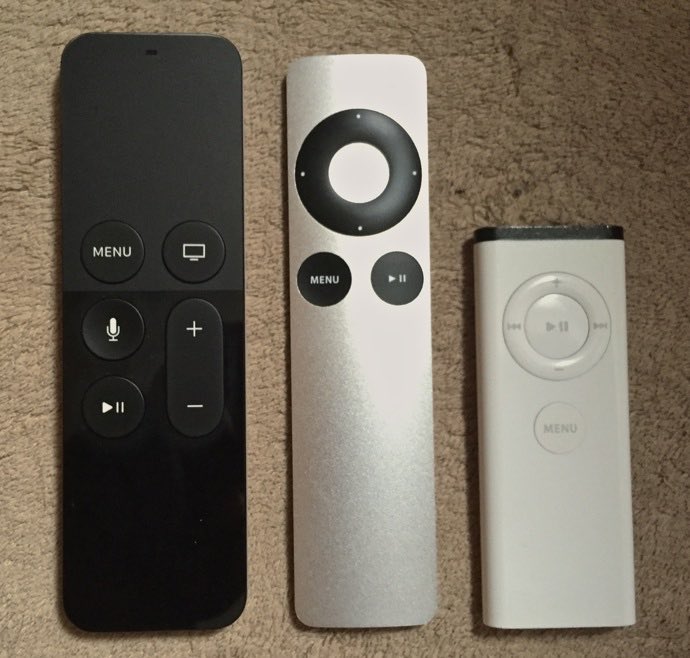 The Apple TV remote has always stood out as being different. In the photo to the right, you can see the three remotes Apple has used. The New Siri remote from the Apple TV 4, the aluminum remote introduced with the 2nd generation Apple TV and the original white plastic remote from the first Apple TV.
The Apple TV remote has always stood out as being different. In the photo to the right, you can see the three remotes Apple has used. The New Siri remote from the Apple TV 4, the aluminum remote introduced with the 2nd generation Apple TV and the original white plastic remote from the first Apple TV.
The new Siri remote is larger than before. That’s a good thing so far as I’m concerned, as the smaller ones easily get lost in couch cushions. In fact, I went so far as to glue one to a chunk of wood a few years back after my kids repeatedly misplaced it.
But the new Siri remote is far more than a bigger form factor and a new paint job. It replaced the old click wheel with a glass Touch pad. It has volume buttons that work with most TVs. It has dual built-in microphones and a Siri button. Push the button and you get a version of Apple’s Siri AI, able to search content by voice and answer simple questions like weather forecasts or sports scores.
And inside the new Siri remote are an accelerometer and a gyroscope. These give it the ability for Wii-like motion control.
New Operating System
The 3rd generation Apple TV runs software based on Apple’s iOS 6. It still works well for its intended function as media streamer, with a Home screen populated with content icons such as Netflix and YouTube.
The Apple TV 4 gets a complete revamp. It’s running a new operating system called tvOS that’s based on iOS 9 and the user interface changes to make using the new Apple TV more like using an iPhone, iPad or iPod Touch.
With tvOS, the Apple TV 4 also gains the option of new cinematic, HD screen savers that are flyovers of well-known cities and landmarks. Like the previous Apple TV you can also choose to display your own photos as screensaver (I like to use this option as a virtual photo album), but those new screen savers are pretty cool.
App Store
Perhaps the biggest change of all for the Apple TV is its App Store.
Everything about the new Apple TV is apps now. You download and install Netflix as an app, and the App Store also offers interactive apps for things like shopping, fitness or checking the weather. And there are games!
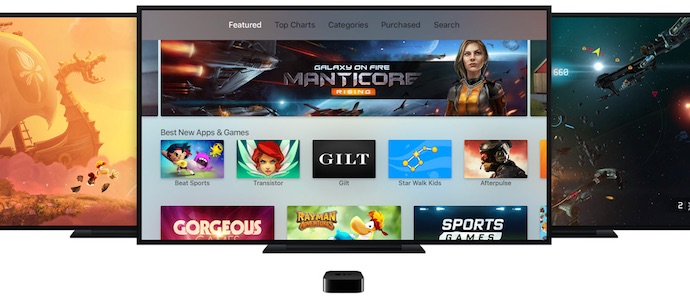
The initial selection was around 1,000 apps and it’s growing. Even better, some are universal apps—buy them once for your iPhone or other iOS device and you don’t have to pay again to use the Apple TV version.
This is where the two versions of the Apple TV 4—32GB and 64GB—come into play. App management gets easier if you have more storage on tap, although it’s easy enough to delete an app and download it again later if you need space.
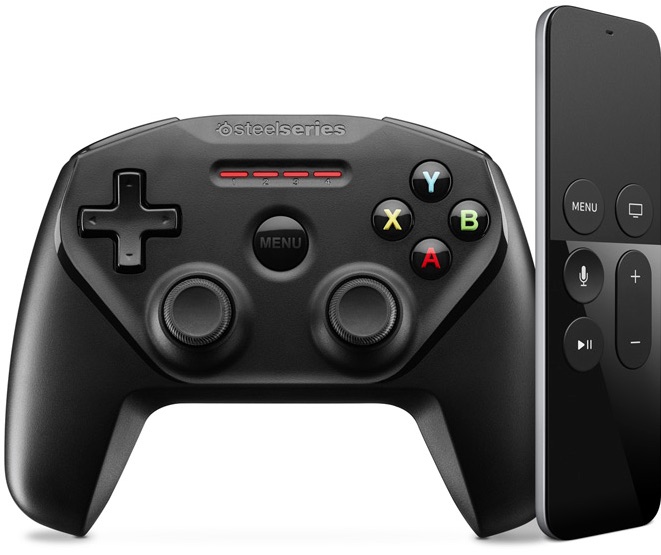 Connectivity
Connectivity
While the 3rd generation Apple TV also supported Bluetooth, Apple has switched things up a bit with the Apple TV 4.
The older model let you pair a Bluetooth keyboard for easier typing. With the new Apple TV, that ability is gone. However, it gains the new functionality of being able to pair Bluetooth headphones, speakers and game controllers. While I’m sorry to lose the keyboard capability, being able to use Apple TV with headphones for private listening, or with a Bluetooth speaker to pump out the sound, is a welcome addition. Here’s how easy Bluetooth pairing is, if you’re curious.
Also welcome is the upgrade to 802.11ac Wi-Fi. Video output is still capped at 1080p HD, but with the new Gigabit Wi-Fi connected to an 802.11ac wireless router, streaming and downloads are far snappier.
The IR transmitter on the Siri remote automatically paired with my Sony TV to control volume, which was a nice trick. What’s less cool is the fact that Apple’s own Remote app for the iPhone and iPad doesn’t yet work with the Apple TV 4. It was a great option for controlling the Apple TV 3, especially when entering text. Hopefully, Apple fixes that sooner rather than later …
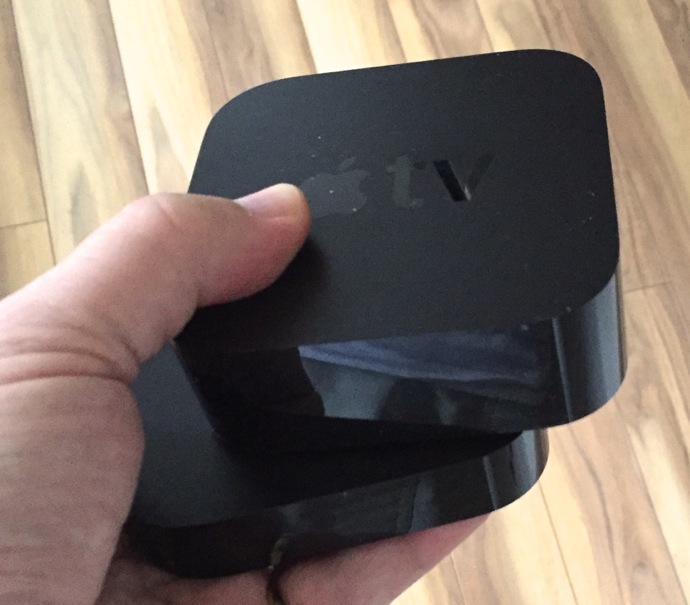 Which Apple TV Should You Buy?
Which Apple TV Should You Buy?
Apple didn’t discontinue the 3rd generation Apple TV and for good reason. Although the hardware is dated, it remains a solid performer as a media streamer and it now fills the role of an inexpensive entry model. If your reason for considering an Apple TV is to stream audio or video—from your local iTunes library, iTunes, Netflix (and other services), Apple Music, or from your iOS device using AirPlay—the 3rd generation Apple TV will serve you well.
However, if you want Siri voice search, the ability to run apps or to use the Apple TV as a casual game box, then you must move up to the Apple TV 4. There’s a $70 difference between the 32GB and 64GB Apple TV 4 and which model you choose really depends on whether you expect to be loading it up with apps. Both 4th generation Apple TV models offer the same solid media streaming capability as the 3rd generation, although with less chance of buffering thanks to that faster 802.11ac Wi-Fi.
For more on the new Apple TV, check out my other posts in the series: What is Apple TV and How Does it Work, and Apple TV 4 Gets a Release Date.



